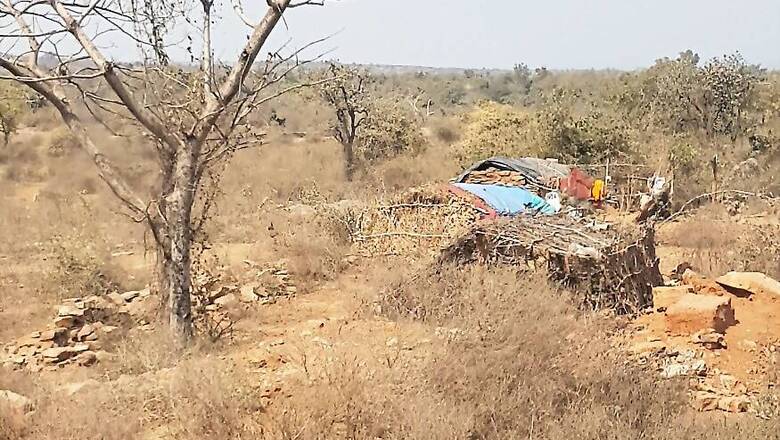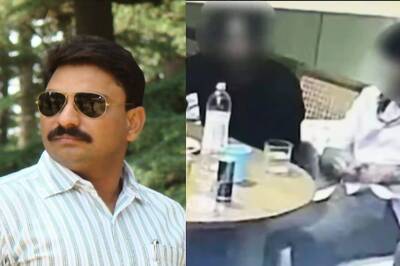
views
Roberstganj (Sonbhadra district): Nestled in the hills, around 80 km from Varanasi, is a district with a population roughly the size of the US state of West Virginia. It has the distinction of being the only district in India that shares its border with four states - Madhya Pradesh to its west, Chattisgarh to the south, Jharkhand to the south-east and Bihar to the north-east. It may seem like a quaint and quiet area, but as recently as 15 years ago, it was the center of a violent Naxalite movement in UP. Welcome to Sonbhadra district – a forgotten corner of Uttar Pradesh.
The presence of limestone, coal and abundant water bodies makes it ripe ground for industrialization. The National Thermal Power Corporation (NTPC) alone has three power plants in the district, in addition to four others. The benefits of rapid industrialization, however, have hardly trickled down to the most oppressed sections. Socio-economic indicators continue to paint a grim picture, it ranks lowest in eastern UP in terms of agricultural development, child malnutrition is high and the rapid pace of industrialisation has led to a conflict over tribal land rights.
It was this conflict that led to the rise of the Naxalite violence in the 1990s. The district was engulfed in violence for the better part of the 1990s and the conflict even spilled over into the new millennium. This year, however, as the district prepares to go to polls on March 8 in the seventh phase, Mayawati’s Bahujan Samaj Party (BSP) hopes to turn UP’s ‘Red Corridor’ blue. In other parts of the state, particularly in communally sensitive western UP, Mayawati is banking on a social engineering experiment. The BSP is trying to cobble together an alliance of Dalit and Muslim votes. In Sonbhadra, where the Muslim population is only around 5%, the same poll arithmetic may not work. Instead, the BSP will is working to ally Dalit votes with those of Adivasis. Together, the two communities make up nearly half of the district’s electorate.
BSP district president B Sagar said his party’s track record in the district will ensure the party “sweeps” all four assembly seats. “When Behenji was in power, she did a lot for the district. Since then, the development of Sonbhadra has been halted. The biggest issue here is land rights of tribals. During our time, the government ensured that tribal communities got ownership of the land that they controlled. No other government has done this much for Adivsasis in UP. Besides, it was during her time that Naxalism truly ended.”
BSP’s pro-tribal push got a huge fillip in October last year when it managed to poach seven-time MLA Vijay Singh Gond from the BJP. Gond first won the Duddhi assembly seat in 1980 and never lost the seat till 2012. This year, he has also managed to ensure a ticket for his son Virendra Singh from the Obra constituency. Both seats are reserved for Scheduled Tribe candidates. The father-son duo brings with them the huge support of the Gond community.
The problem for the BSP, however, is that SC and ST voters are largely concentrated in the Dudhi and Obra constituencies. In the other two seats – Robertsganj and Ghorawal – it will be difficult for any party to win without the support of Brahmins and OBCs. In 2007, the BSP won both assembly seats in Sonbhadra. After delimitation, two new assembly seats were carved out. This upset the BSP’s calculations in 2012. Coupled with the anti-incumbency wave, this new development ensured that Maywati’s party won just one of four seats. This year, the BJP has reached out to communities like the Khushwahas and Nishads, while trying to break Gond’s hold over ST voters.
“The SP will be wiped out in Sonbhadra and the BSP will also fare very poorly. Robertsganj, since the days of the Bhartiya Jana Sangh, has been our stronghold. It was only in the 1980s, when other parties started dividing people on the basis of caste that we started doing poorly. This year, there is a Modi wave. Old calculations of caste will cease to matter. People have decided to vote for development. Vijay Singh Gond will also lose from his seat. After his son got a ticket, people have started to see that he is less interested in the development of tribals and more interested in promoting his son,” said Alok Mishra, BJP’s district president.
Meanwhile, as political parties struggle with poll arithmetic, Sonbhadra continues to grapple with basic issues of bijli, sadak, pani. Dwarika Prasad, a shopkeeper in Robertsganj town, summed up his biggest concern in one line. “Bataiye, jis jila mein heere ka khan hai, us jila mein hi bijli, sadak, paani nahi hai (A district which has diamond mines doesn’t even have electricity, roads and drinking water).”


















Comments
0 comment